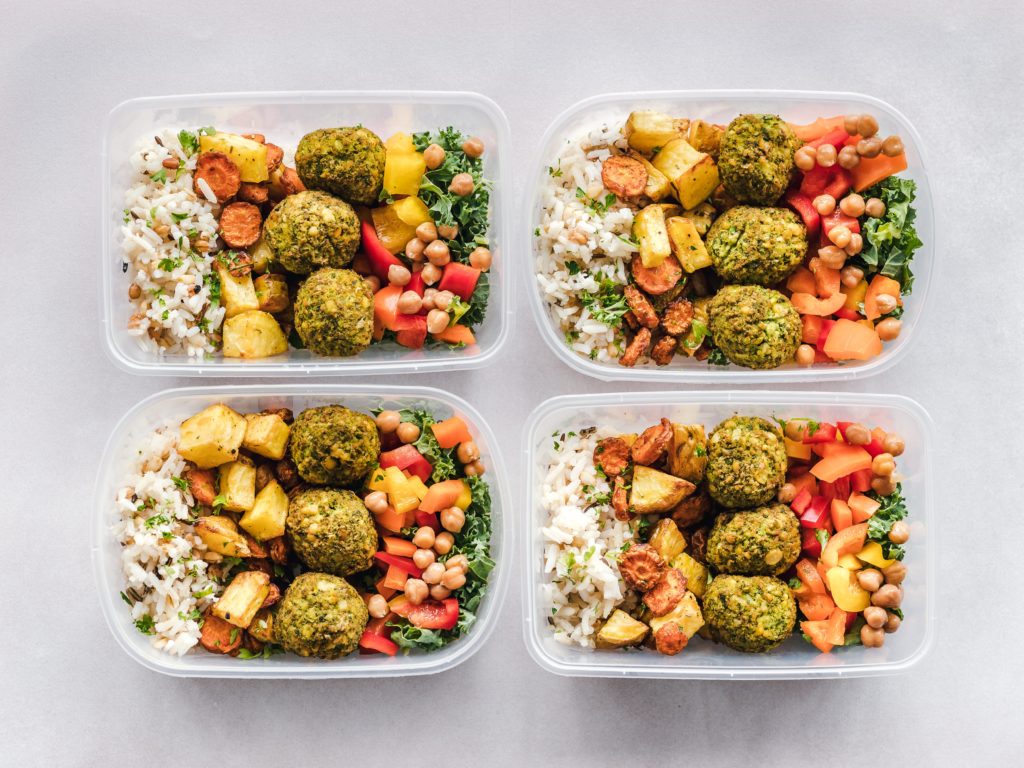Anyone who knows me well knows that I love planning and making lists. I make to do lists, packing lists, grocery lists, lists of books to read and places to travel, and more. It’s no surprise that meal planning comes naturally to me.
Meal planning is the process of planning upcoming meals, whether that be for a few days, a week or a month at a time, and whether that’s just dinners or all meals. Meal planning can also incorporate making your grocery list, going shopping and doing make-ahead tasks—basically, all the work you do beforehand to make it easy to get dinner on the table.
Though meal planning is often thought of in terms of saving time and money, it’s also a helpful tool for sustainable living through reducing food waste. Read on to find out more.
Benefits of meal planning
The benefits of meal planning extend to several areas of your life.
Save time
Meal planning saves you time at the grocery store because you know exactly what you need to buy, so you don’t wander the aisles as much. Similarly, meal planning cuts down on grocery store trips because, when you plan ahead, you’re less likely to realize at the last minute that you’ve run out of an ingredient. Meal planning also saves time when cooking because you can plan to prepare some elements ahead of time or eat the same meal over several days.
Save money
If you have a grocery list and plan when shopping, you’re less likely to make impulse purchases that you don’t need and may end up going bad anyways. And if you have a plan for what you’ll eat—and maybe even some food already prepared—you’re less likely to order takeout because you didn’t know what to cook. We all know that dining out repeatedly adds up.
Reduce food waste
When you do meal planning, you only buy the ingredients that you need to make the recipes you have planned. And you have a plan to finish leftovers and use up the ingredients you bought, like that bunch of cilantro or half can of beans. If you make a big pot of something, you may also store portions in the freezer to extend their life. This cuts down on instances of discovering wilting produce or dodgy leftovers at the back of the fridge. We know that saving food saves precious resources and even reduces our contribution to climate change.
Reduce stress
Meal planning reduces stress across the board. You don’t need to decide what to eat at the last minute, and grocery store trips go quicker and more smoothly. You can also plan to eat leftovers or cook something easy on busy days so that you’re not scrambling for something to eat on a complicated day.
Eat healthier
When you plan ahead, you’re more likely to plan healthy, balanced meals since you’re not choosing what to eat when you’re tired and hungry. You may also plan to eat a variety of meals and try new recipes instead of always eating the same thing. If you have healthy food already planned and prepared, you’ll probably eat that instead of dining out (which is often less healthy). Meal planning also gives you better control over your portion size.
Meal planning versus meal prepping
Meal planning and meal prepping are two related activities with similar names. Meal planning focuses on the planning stage of deciding what you’ll eat and ensuring you have the necessary ingredients.

Meal prepping, meanwhile, prepares those ingredients ahead of time so that you have less to do when you’re cooking. This could mean slicing vegetables, cooking a pot of beans, or even making an entire meal and diving it into containers.
I’ll admit that I don’t really do meal prepping, though it would be more efficient to, for example, dice a bunch of onions at once instead of slicing them every time I need them. Some people are diligent about doing their meal prepping every Sunday to get ready for the week.
How to meal plan
Meal planning is a flexible process that you can adapt to your lifestyle and preferences. Do meal planning at the frequency that makes sense for you, whether that’s weekly or monthly. You can choose to do your meal planning by hand or using your phone or computer (I suggest some possible tools below).
You can also choose how detailed to get—whether to just plan dinners or to plan all meals, including snacks. Basic elements you might want to include in your meal plan include the days of the week, the dishes you will make and any special ingredients needed.
Once you have an outline for your meal plan, it’s time to plan what to cook. You can do this based off your favourite dishes or look for recipes online. Include the main dishes and any sides, like grains or vegetables.
Remember that meal planning doesn’t need to mean cooking every day—you can plan to eat leftovers some days or have the occasional restaurant meal. When planning your meals, keep in mind your schedule and how much time you’ll have to cook on a particular day. For example, if I have orchestra rehearsal on Monday nights, I’m not going to plan to make soup that day.
Once you’ve completed your meal plan, you can use it to fill in your grocery list. Add any ingredients you need for the recipes you’re planning to cook, including produce. Make sure as well to check your pantry, fridge and freezer for any staples that are running low.
Tools for meal planning
There are a variety of online and paper-based tools you can use for meal planning.
- A piece of scrap paper
- A whiteboard
- A calendar (print or digital)
- A spreadsheet
- A meal planning template (see these ones from Project Meal Plan)
- A meal planning app (see these suggestions from The Spruce Eats, or I would also recommend Zestyplan)
Tips for meal planning
Here are a few more tips to help you get the most out of meal planning.
- Start small by focusing on only one meal or planning for just a few days
- Remember that you don’t need to stick to your plan exactly
- Keep a list of meal ideas and recipes for inspiration
- Plan a variety of meals so you don’t get bored
- Remember to incorporate the different food groups, including proteins, grains, and fruits and vegetables
- Consider using a regular theme to help with planning, like Meatless Mondays or Taco Tuesdays
- Plan to use fresh ingredients earlier in the week so they won’t go bad
- Make a plan to use up larger containers of food, like cans of ground tomatoes, by including them in several meals
- Keep your grocery list in an easily accessible place and add ingredients as you run out of them
- Store leftovers properly, and date and label frozen food to jog your memory later
I hope this guide to meal planning has been helpful and shown you the benefits of meal planning for your wallet, the planet and your peace of mind!
I want to know: Do you do meal planning? What tips would you share?
Categories and tags:
Share this post:

